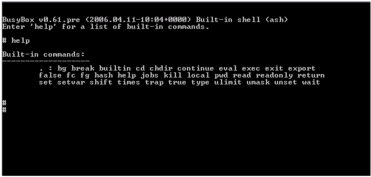Telnet facts for kids
Telnet is an early internet tool that lets you connect to and control another computer from far away. Think of it like a remote control for a computer that could be anywhere in the world. It works using a client-server system, where your computer (the client) sends commands to the other computer (the server).
The name "Telnet" stands for "telecommunications network." It was one of the first ways people could log into and use computers remotely over a network.
However, Telnet has a major security problem. It sends all information, including usernames and passwords, as plain text. This means anyone snooping on the network could easily read it. Because of this, Telnet is rarely used today for logging into systems. Instead, a much safer tool called SSH is used, which encrypts all the data.
Contents
How Telnet Works
Telnet creates a connection between two computers, allowing you to type commands on your machine that are run on the remote machine. It makes your computer act like a "virtual terminal" for the other system. A terminal is a simple screen and keyboard used to interact with a computer.
When you use a Telnet program, it usually connects to a specific network location called a port. The standard port for Telnet is port 23. The server computer "listens" on this port for connection requests from clients.
Telnet is a very old protocol, created even before the modern internet's main protocols were finished. It was originally designed for the ARPANET, the network that came before the internet.
History of Telnet
Telnet was created back in 1969 for the ARPANET. At first, it was a simple, informal tool. Over the years, it was improved and officially defined as an internet standard in 1983.
Many updates were made to add new features. However, as the internet grew, its lack of security became a serious issue. This led to the development of more secure tools like SSH.
Why Telnet is Not Secure
Using Telnet on a public network like the internet is very risky. It has several security weaknesses that hackers can take advantage of.
The main problem is that Telnet does not use encryption. Encryption scrambles data so that only the sender and receiver can read it. Since Telnet sends everything as plain text, anyone who can intercept the connection can see your username, password, and everything you type. This is like sending a postcard with your secrets written on it for everyone to see.
Because of these risks, security experts strongly advise against using Telnet for logging into remote computers.
Safer Alternatives
For most tasks, SSH is the modern replacement for Telnet. SSH does everything Telnet can do, but it adds strong encryption. This keeps your login information and data safe from anyone trying to eavesdrop.
If Telnet must be used, it should only be done over a secure, private network, like a VPN. A VPN creates an encrypted "tunnel" for your data, which protects the unencrypted Telnet information inside it.
Uses of Telnet Today
Because of its security problems, Telnet is not used much for logging into remote systems anymore. However, it still has a few specific uses.
- Legacy Equipment: Some older industrial or scientific devices were built to be managed over a network using only Telnet. In these cases, it might be the only option available.
- Network Debugging: Network administrators sometimes use a Telnet client to test other network services. For example, they can use it to manually send commands to a web server or an email server to see how it responds. This helps them find and fix problems.
- Hobbyists: Some communities, like amateur radio operators, still use Telnet for sharing public information.
Even though it's not recommended, thousands of devices connected to the internet still have Telnet enabled, often because of poor configuration. This makes them easy targets for hackers.
Common Telnet Programs
Several programs, called clients, can be used to connect to a Telnet server.
- PuTTY: A very popular free client for Windows and Linux that supports Telnet, SSH, and other protocols.
- TeraTerm: A free, open-source terminal program for Windows.
- Built-in Clients: Many operating systems, like Linux and older versions of Windows, include a basic Telnet client that can be run from the command line.
See also
 In Spanish: Telnet para niños
In Spanish: Telnet para niños
- SSH
- Virtual terminal
- List of terminal emulators


